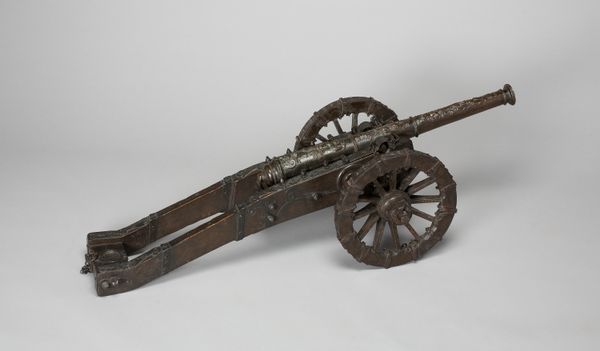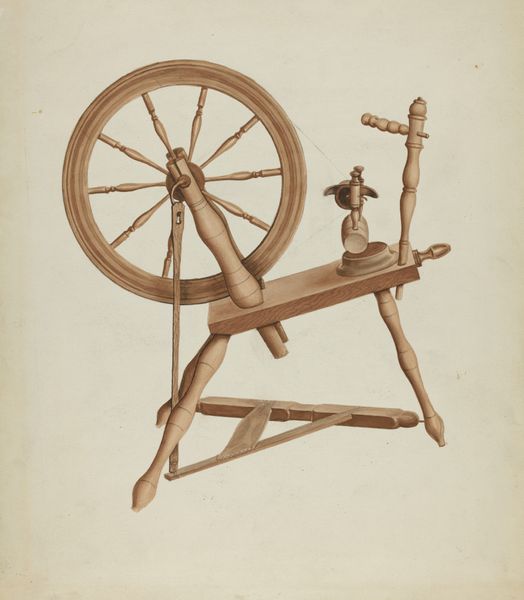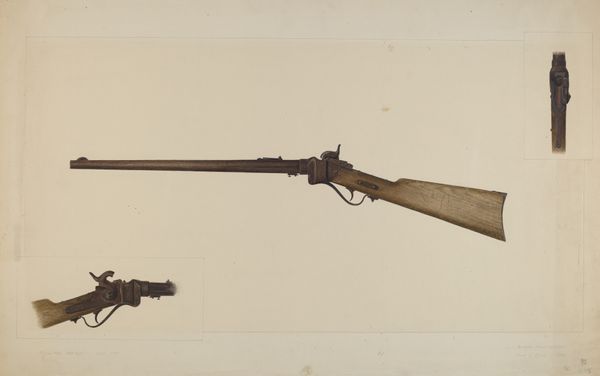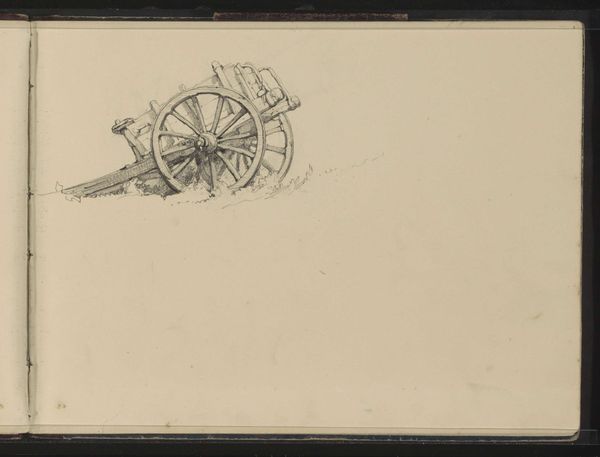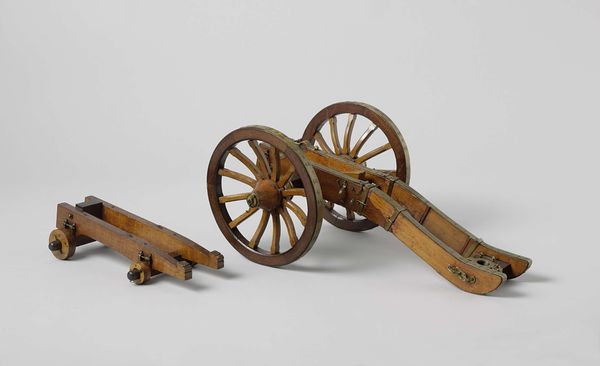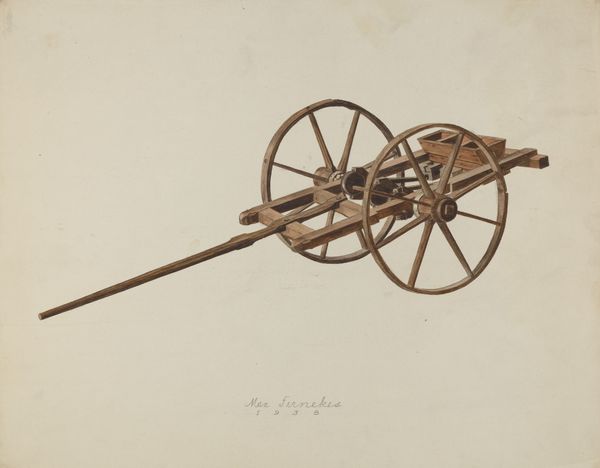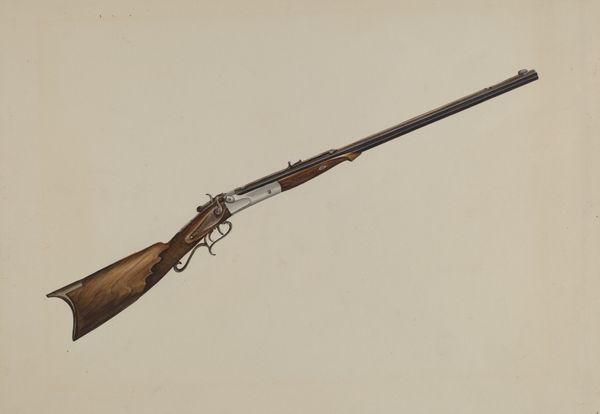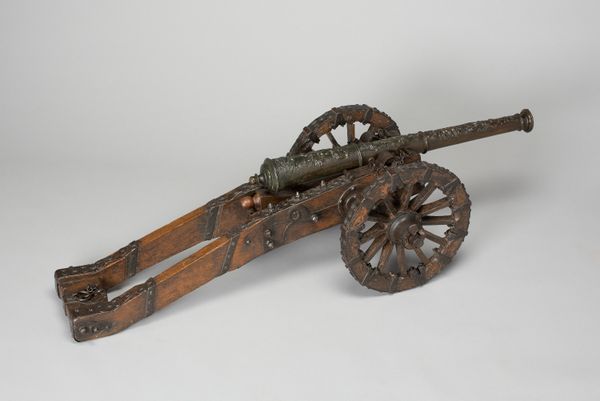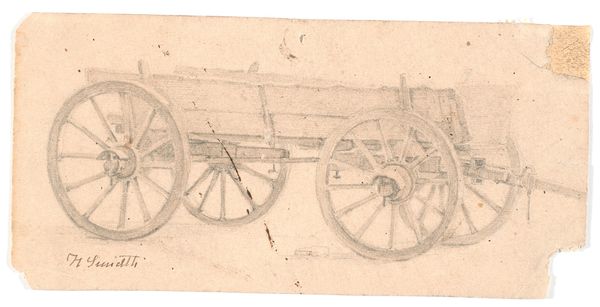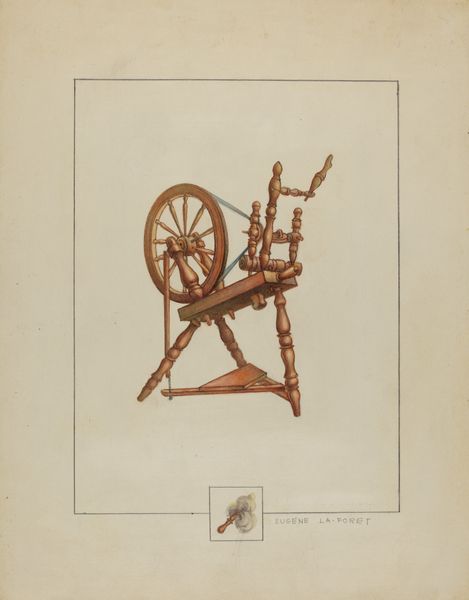
drawing
#
drawing
#
geometric
Dimensions: overall: 22.3 x 29.1 cm (8 3/4 x 11 7/16 in.) Original IAD Object: 9" long; 4" high; 2 3/4" wide; wheels: 2 7/8" in diameter
Copyright: National Gallery of Art: CC0 1.0
Curator: Ah, this piece has such a quaint charm. "Toy Cannon," a drawing by Charles Henning from around 1941. It's quite unassuming at first glance. Editor: It has an air of melancholy. A sort of faded grandeur. The colour palette feels a little muted, like a memory fading with time. The texture too. I mean, it's flat, it is a drawing but makes you wonder if we have a flattened object represented there. Curator: Absolutely. I feel Henning captures the essence of something that might once have held enormous value or symbolism but is reduced here, almost disarmed and made safe through scale and material. It reminds me how objects contain their history and can transcend the intentions of both maker and user. Editor: Right. It brings up this tension, this play between utility and purpose. I wonder about the circumstances surrounding this drawing. Is this documentation, or is Henning exploring how these objects reflect both childhood dreams of conquest, yet tied to the manufacturing process of industrial America at the time? It’s not simply this innocent toy as first believed. The material and labour behind such objects! That labour made conflict affordable. Curator: That's an excellent point! Given the date, with the world on the cusp of entering global conflict, the choice of subject and the rendering becomes imbued with additional significance. Henning invites a powerful meditation on the juxtaposition of childlike innocence with the pervasive nature of military production, perhaps questioning what is sacrificed when society engages with war. Editor: You know, it makes me also think about value of the object itself now and how has changed: a document, a work of art to be displayed, a childhood toy. The shift of the toy from factory floor to here makes us aware about mass production as well. Who had the means to own this drawing in that moment, but who could produce and consume the canon? And who had nothing to do with all? Curator: So true, it really invites so much to consider, it's fascinating. Well, whatever our speculations about "Toy Cannon", Henning's little drawing speaks loudly of both personal reveries and universal conflicts. Editor: It’s a delicate study, both for those engaged in this discussion, and everyone can come away questioning their role in society as both spectator and consumer. It offers a space of pause where you reflect.
Comments
No comments
Be the first to comment and join the conversation on the ultimate creative platform.

